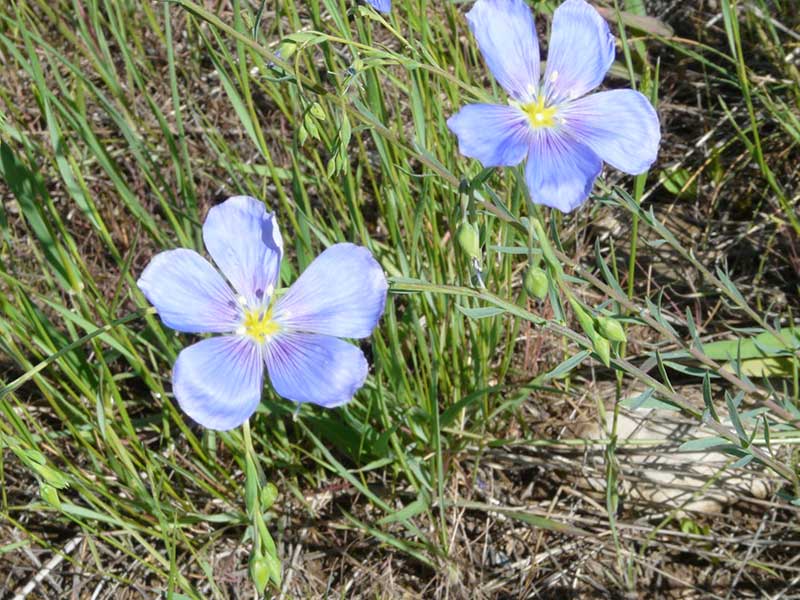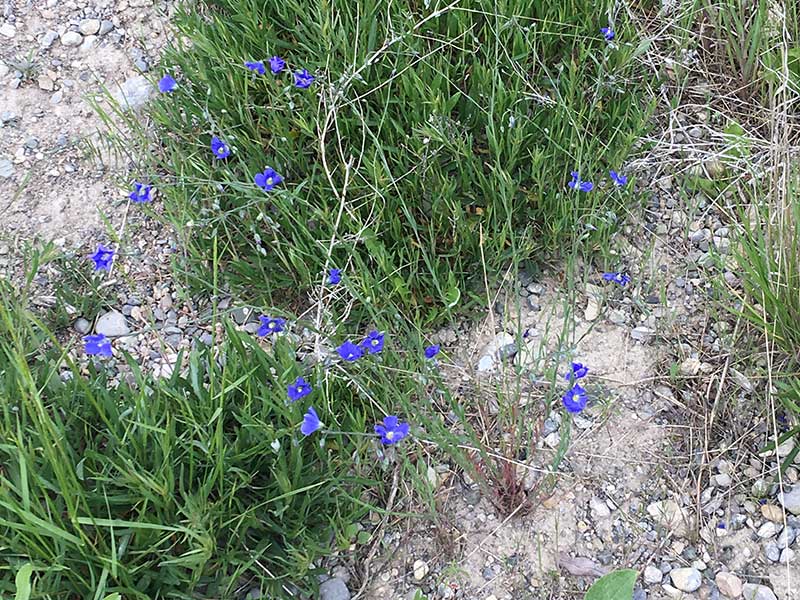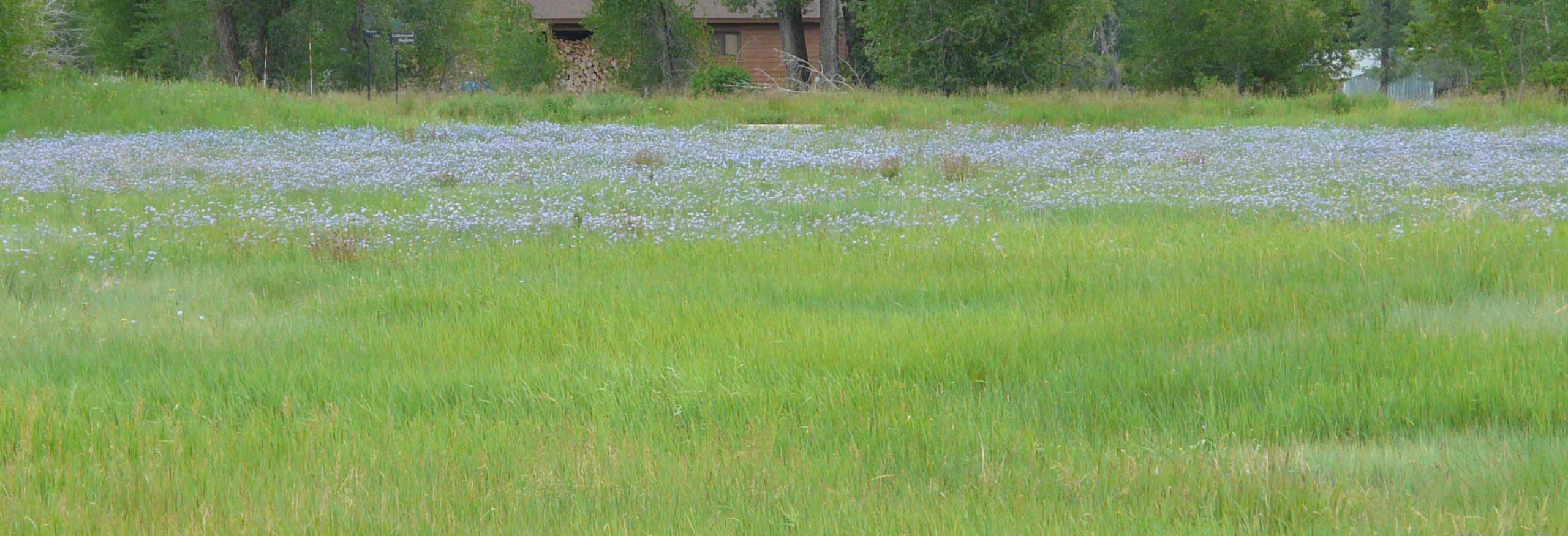Linum lewisii / wild blue flax
- intense blue, 5-petaled flowers
- red-ish or darker blue veins in petals
- buds, flowers and developing fruit present at same time
- narrow, sessile, 1 inch (ish) leaves
- especially on roadsides and in meadows in the Valley
Also known as: Lewis’s flax, prairie flax, wild blue flax
Looking into the life styles, flowering characteristics and habitat choices of L. lewisii is bound to confuse you. For example, it has been described as being a herbaceous annual, or a perennial arising from a persistent branched caudex and taproot. The flowers have been described as being in clusters, or on a raceme, cyme or panicle.
In any case, the wild blue flax begins growth and flowering in the spring and the seeds ripen in late summer. The flowers are intense blue (or pale blue, or lavender, or white), with 5 petals. Deeper blue or red-ish veins run from the center of the petals outward. Frequently, the flowers open at sunrise and are gone by noon.
The flax flowers bloom from the base of the inflorescence upward, with fruits developing below the current lot of blooming flowers. The fruits are spherical capsules, eventually with lots of very small seeds. At least they are if the flowers are cross pollinated by insects or wind. Flowers that aren’t visited may produce the capsules, but no seed.
Although wild blue flax may grow on ridges and dry slopes, or in forest openings, or with sagebrush, the most likely place to find it in the Valley is along roadsides, or sometimes as a wonderful blue sward in the middle of a meadow.
One thing to note… it is extremely difficult to distinguish our native blue flax from a European species (L. perenne) sold in the garden shops. The two species are actually so similar that some references consider them one species. Technically the only difference is that the styles in L. perenne can be either longer or shorter than the stamens while Blue Flax has styles all the same length. These will not show up in a cell phone photo, I fear, and you might need to get a hand lens if you really want to know.




